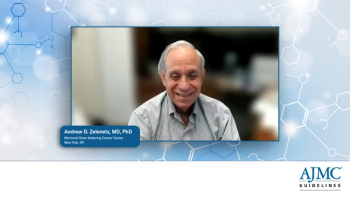
Cardiac Rehab Linked to Improved Mortality Among Patients With HFrEF
In this study, outcomes were investigated among a cohort of patients with heart failure with reduced ejection fraction (HFrEF) who participated in a cardiac rehabilitation program post hospital discharge after they survived acute onset of HFrEF.
A cardiac rehabilitation program produced survival benefits among patients following hospitalization, and discharge, for an acute event of
For this study, the authors defined HFrEF as having an ejection fraction of less than 40%.
They conducted their study because previous research has produced mixed results on the benefits of cardiac rehab for patients with HF in the post–acute care setting and they wanted more information on its effects over midterm and long-term follow-ups.
Their study cohort consisted of 518 patients discharged from the HF center at Kaohsiung Chang Gung Memorial Hospital in southern Taiwan between May 2014 and July 2019; 137 patients who completed at least 1 exercise session with a rehabilitation physiatrist as part of the hospital’s multidisciplinary HF disease management program in the 3 months after their discharge comprised the cardiac rehab cohort. This program also included dietitian, pharmacist, and psychological consultations; psychiatric assessment; and HF nursing education.
“While the positive effects of physical activity in chronic stable HF patients are established, baseline ventilatory, hemodynamic, autonomic, or clinical factors that can predict the outcome of exercise training in patients with HF remain unknown,” the authors wrote. “This study aimed to use real-world data to evaluate the impact of postdischarge [cardiac rehab] on acute HF patients with reduced ejection fraction.”
With a primary outcome of all-cause mortality and secondary outcomes of readmission for HF and quality of life, the investigators saw an overall 24.9% rate of all-cause mortality and a 34.6% rate of rehospitalization for HF among their study participants. When a Cox proportional hazard analysis was performed, those assigned to the cardiac rehab group were shown to have a 51% lower risk of death vs the non-rehab group (HR, 0.49; 95% CI, 0.308-0.778). The median (IQR) follow-up was 3.04 (1.72-4.50) years.
In addition, the cardiac rehab group had an all-cause mortality rate that was more than half that of the non-rehab group: 13.9% vs 28.9% (P < .001).
There was even a lower risk of all-cause mortality seen among participants on renin-angiotensin-aldosterone system inhibitors (HR, 0.34; 95% CI, 0.19-0.60) vs those not receiving this treatment (HR, 1.60; 95% CI, 0.56-4.55; P = .014). This drug class is most often used
However, no difference was seen between the study cohorts regarding patient characteristics or risk factors after propensity score matching. In addition, baseline peak median VO2 did not differ significantly among the cardiac rehab and non-cardiac rehab groups following a cardiopulmonary exercise test that was performed in the month after hospital discharge, with these levels at 15.9 (12.85-18.95) and 14.82 (11.50-18.57) mL/kg/min, respectively; the HF hospitalization rate did not differ either, at 35.0% and 34.4% (P = .890).
Overall, 72.1% of the study participants had ischemic cardiomyopathy.
The authors’ analyses also revealed the following:
- Although quality of life—measured using the Kansas City Cardiomyopathy Questionnaire short form—improved significantly more among the rehab group vs the non-rehab group, respectively, at 6 months, this gap had closed somewhat by 12 months:
- 6 months: 28.3 (7.81-45.31) vs 18.75 (5.21-36.46)
- 12 months: 28.13 (7.12-43.40) vs 20.31 (4.69-38.19)
- All-cause mortality was significantly lower in those in the rehab group who attended at least 36 exercise sessions vs those in the non-rehab group (P = .007)
- All-cause mortality trended upward as cardiac reahb sessions decreased (P < .001)
The authors noted that although cardiac rehab was shown to have an association with improved prognosis following an incident of acute HF, and that greater adherence to rehab positively correlated with better outcomes, the placebo effect cannot be discounted.
“A cardiac rehab program is a slow intervention where the end point benefits usually take longer to be realized. The benefits from coronary interventions or cardiovascular surgeries are usually immediate and obvious,” the authors wrote. “As this study highlighted a significant reduction in all-cause mortality in the cardiac rehab group, efforts should be made to facilitate cardiac rehab programs so that more patients can participate and benefit from it.”
These programs, they added, should be multidisciplinary—including contributions from dietary counselors, medication optimization, and psychosocial support—and implemented throughout a patient’s recovery: in hospital, as an outpatient, and in the community or home.
“Overall, this study provides evidence of the benefits of cardiac rehab as a standard treatment in patients with post-acute HF,” they concluded. “Hence, efforts should be made to implement cardiac rehab with eligible patients.”
Reference
Chen S-M, Wang L-Y, Liaw M-Y. Outcomes with multidisciplinary cardiac rehabilitation in post-acute systolic heart failure patients—a retrospective propensity score-matched study. Front Cardiovasc Med. Published online April 12, 2022. doi:10.3389/fcvm.2022.763217
Newsletter
Stay ahead of policy, cost, and value—subscribe to AJMC for expert insights at the intersection of clinical care and health economics.






































